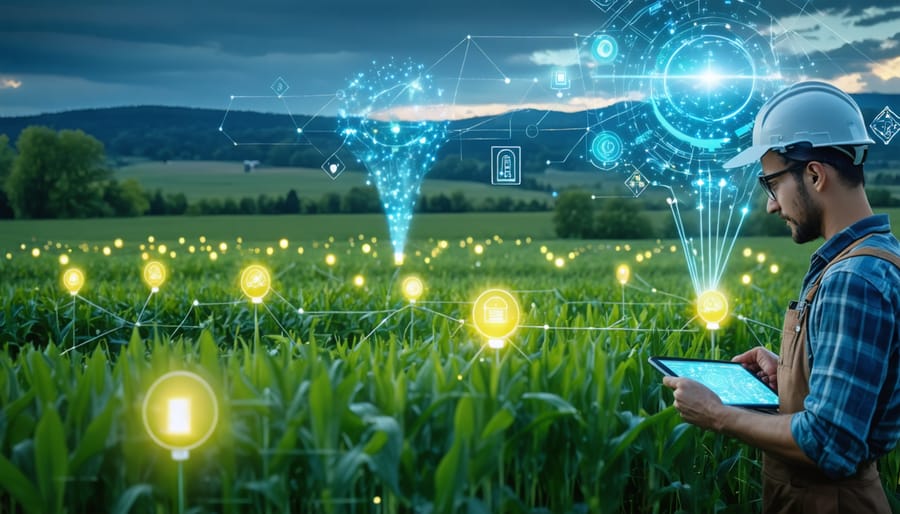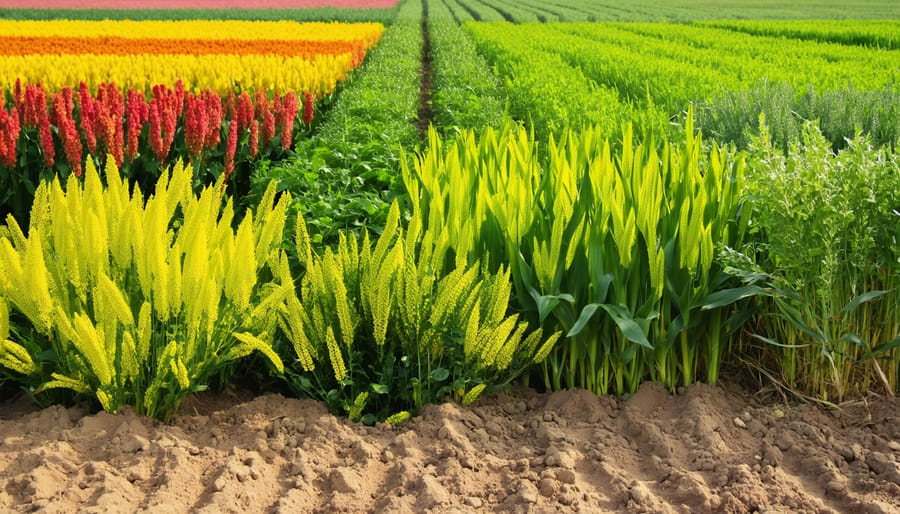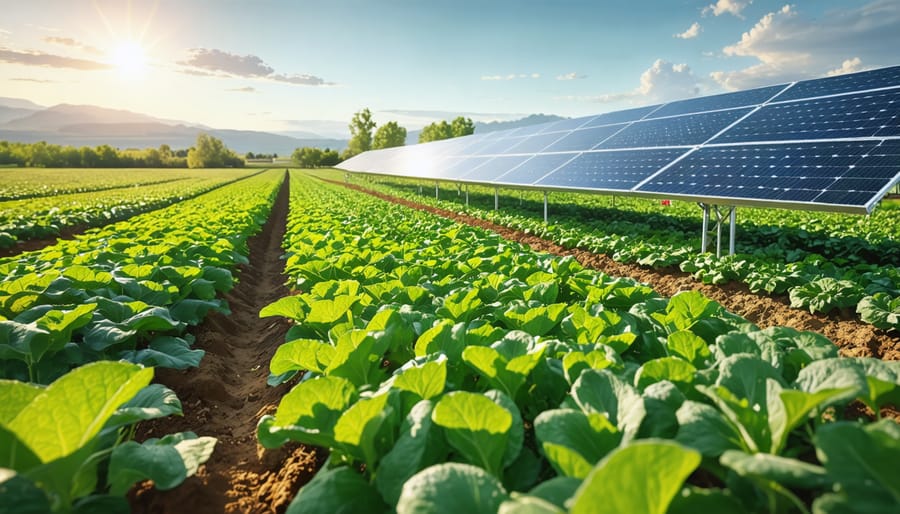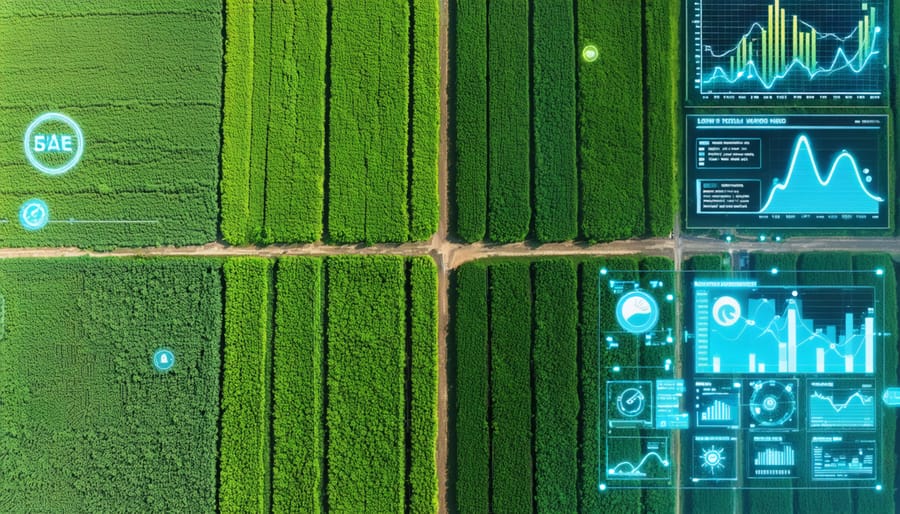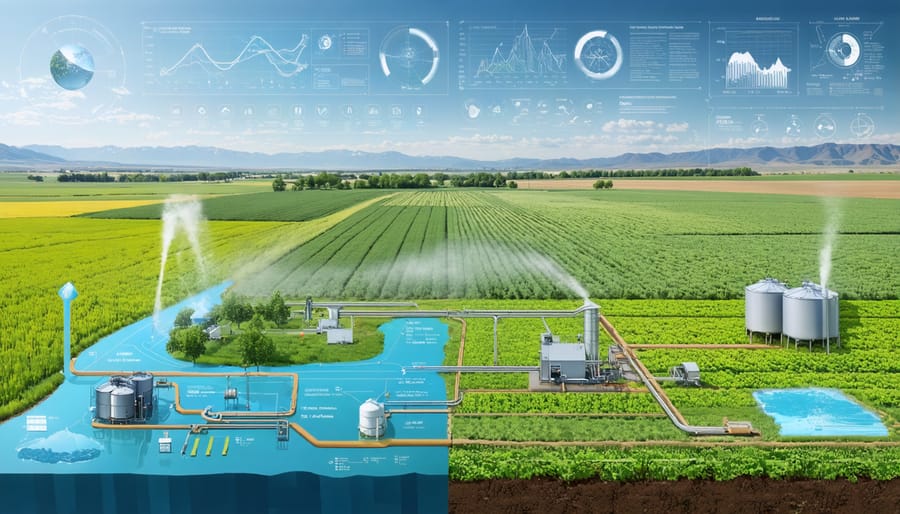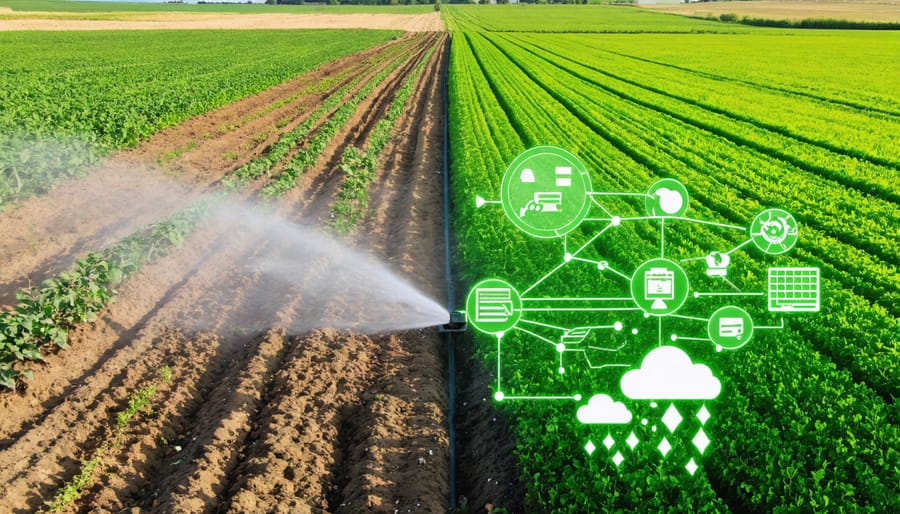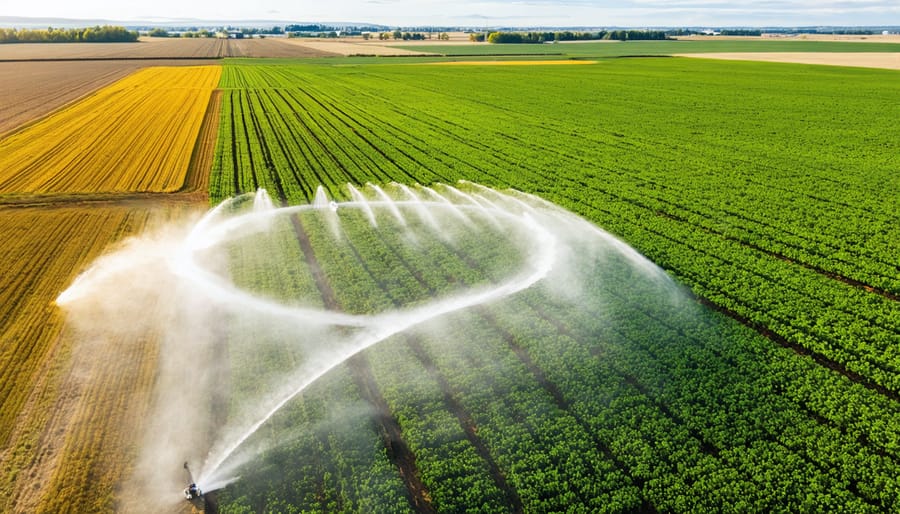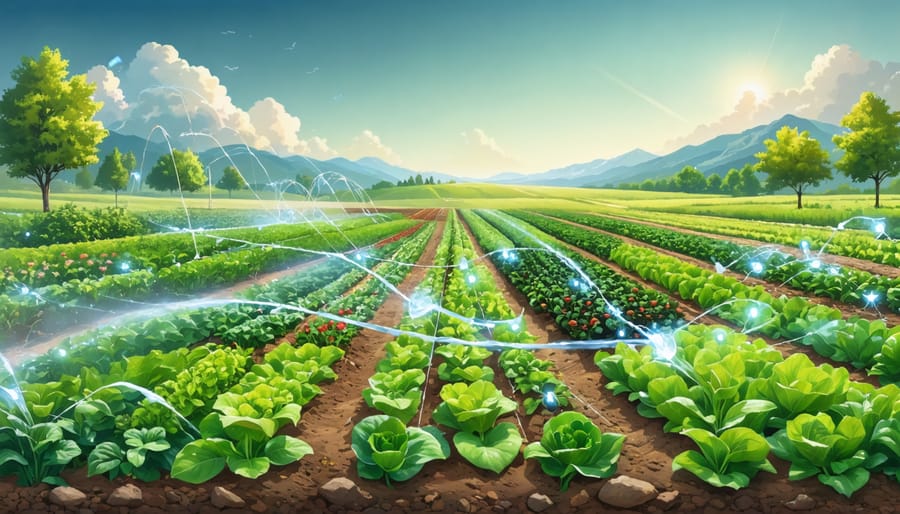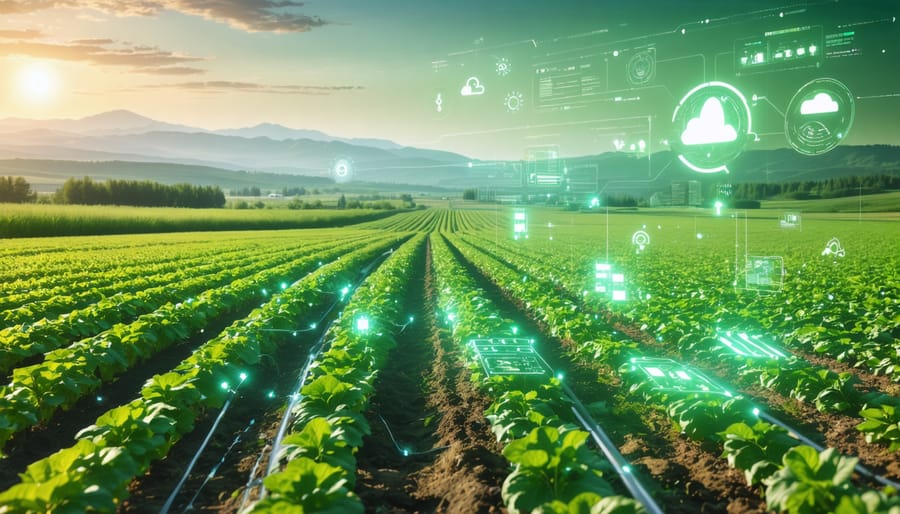Transform your farm’s productivity with IoT sensors that deliver real-time soil moisture, nutrient levels, and crop health data directly to your smartphone. Strategic placement of wireless monitoring stations across Alberta fields has achieved water efficiency through smart monitoring, reducing irrigation costs by up to 30% while maximizing yield potential. Automated climate stations now integrate with precision irrigation systems, enabling data-driven decisions that protect crops during extreme weather events and optimize resource allocation throughout the growing season.
Canadian farmers implementing IoT solutions report significant improvements in operational efficiency, with smart sensors detecting plant stress 48 hours before visible symptoms appear. These early warning systems, combined with automated response protocols, have revolutionized traditional farming practices, making precision agriculture accessible to operations of all sizes. From soil composition tracking to automated greenhouse controls, IoT technology provides the real-time insights needed to maintain optimal growing conditions while reducing labour costs and environmental impact.
Real-Time Water Quality Monitoring: A Game-Changer for Organic Farms
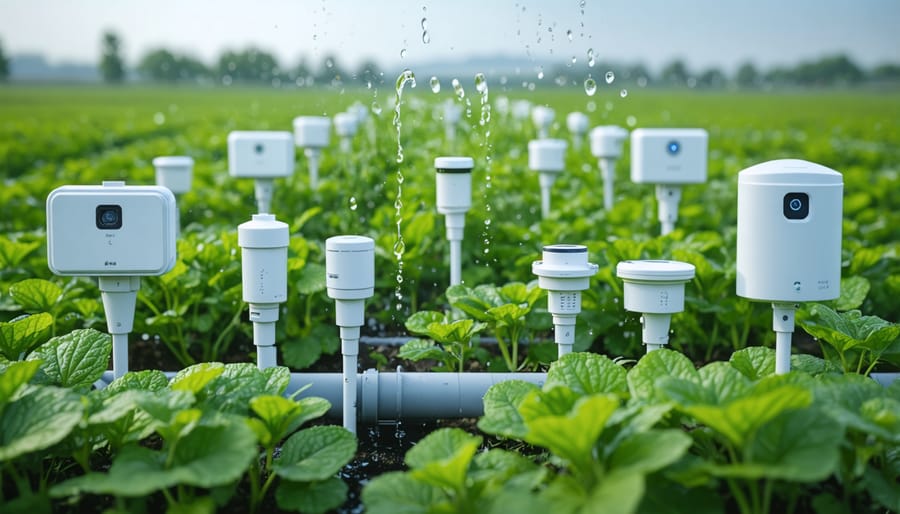
Key Parameters Tracked by IoT Sensors
Modern IoT sensors track several critical parameters essential for effective water quality management in Alberta’s farming operations. These sophisticated devices monitor pH levels, ranging typically between 6.0 and 8.5, ensuring optimal conditions for crop growth and soil health. Electrical conductivity (EC) measurements, expressed in microsiemens per centimetre (µS/cm), help farmers assess dissolved salt content and nutrient availability.
Temperature monitoring is crucial for our prairie climate, where seasonal variations can significantly impact water quality. IoT sensors provide real-time readings in Celsius, helping farmers make timely irrigation decisions. Dissolved oxygen levels, measured in parts per million (ppm), are tracked to ensure healthy root development and prevent anaerobic conditions that could harm crops.
Turbidity measurements, expressed in Nephelometric Turbidity Units (NTU), indicate water clarity and potential contamination. These sensors also monitor nitrogen and phosphorus levels, essential nutrients that, when properly balanced, support sustainable farming practices while preventing excess runoff into local watersheds.
What makes these IoT solutions particularly valuable for Alberta farmers is their ability to integrate multiple parameters into a single dashboard. The data is collected continuously and can trigger automated alerts when readings fall outside preset ranges. This proactive approach helps farmers maintain optimal growing conditions while conserving water resources.
For organic operations, these sensors are especially beneficial as they help maintain certification requirements by documenting water quality parameters throughout the growing season. The systems can be customized to track additional parameters specific to different crop types and local soil conditions.
Data Collection and Analysis Systems
In modern IoT farming, data collection systems serve as the foundation for informed decision-making. Sensors strategically placed throughout fields and facilities continuously gather vital information about soil moisture, temperature, humidity, and nutrient levels. These sensors transmit data in real-time to central hubs, where sophisticated software processes and analyzes the information.
For Alberta farmers, weather-resistant sensor networks are particularly valuable, capable of withstanding harsh prairie conditions while maintaining accuracy. These systems typically include soil probes that measure moisture at various depths, providing crucial data for irrigation management. Environmental sensors monitor air quality, wind patterns, and precipitation, helping farmers anticipate and respond to changing weather conditions.
The collected data is processed through cloud-based platforms that use machine learning algorithms to identify patterns and generate actionable insights. Farmers can access this information through user-friendly dashboards on their smartphones or tablets, enabling them to make quick decisions about irrigation scheduling, pest control, and resource allocation.
Many Canadian farmers are now implementing automated alert systems that notify them when conditions fall outside optimal ranges. For example, if soil moisture drops below critical levels, the system sends immediate notifications, allowing for prompt intervention. This proactive approach has helped farmers in southern Alberta reduce water usage by up to 30% while maintaining or improving crop yields.
Data analysis also extends to historical tracking, enabling farmers to compare seasonal patterns and optimize their operations year over year. This long-term view helps in planning crop rotations and predicting potential challenges before they arise.
Alberta Success Story: The Thomson Family Farm
Located just outside of Olds, Alberta, the Thomson Family Farm has been operating for three generations, with current owners Sarah and Mike Thomson leading the transition to smart farming practices. In 2021, they faced a crucial decision: how to maintain their organic certification while improving water efficiency across their 800-hectare operation.
“We were spending countless hours manually checking soil moisture levels and adjusting irrigation schedules,” Sarah explains. “With increasingly unpredictable weather patterns, we knew we needed a better solution.”
The Thomsons implemented a network of IoT soil moisture sensors and automated irrigation controls across their fields. The system includes 24 wireless sensors that transmit real-time data to their farm management platform, allowing them to monitor water levels from their smartphone or computer.
The results were impressive. Within the first growing season, the Thomsons reduced their water consumption by 32% while maintaining crop yields. The system’s early warning capabilities also helped them prevent potential crop stress during a particularly dry spell in July 2022.
“The sensors alerted us to dropping moisture levels in our west field before we could see any visible signs of stress in the crops,” Mike notes. “We were able to adjust our irrigation schedule immediately, potentially saving a significant portion of our canola crop.”
The implementation wasn’t without challenges. The Thomsons worked closely with local agricultural technology specialists to ensure proper sensor placement and calibration. They also invested time in training their staff to use the new system effectively.
The total investment of $45,000 was partially offset by a provincial agricultural technology grant, and the Thomsons estimate the system will pay for itself within three years through water savings and improved crop yields.
For other Alberta farmers considering similar solutions, Sarah offers this advice: “Start small, perhaps with one field, and scale up as you become comfortable with the technology. The learning curve is worth it for the peace of mind and resource savings you’ll achieve.”
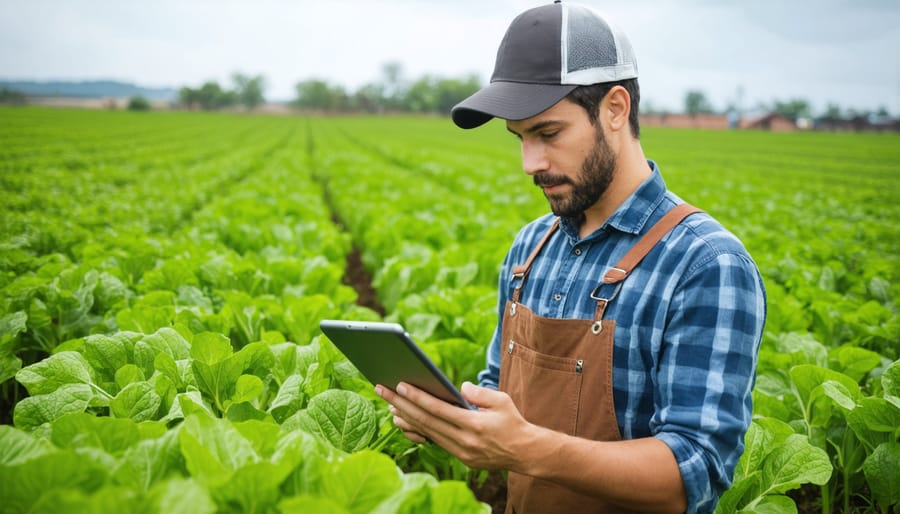
Implementation Guide for Your Farm
Choosing the Right Sensors
When selecting sensors for your IoT farming setup, start by identifying your specific monitoring needs. For Alberta farmers, soil moisture sensors are often a top priority, particularly when implementing smart irrigation solutions. Look for sensors with IP67 or higher waterproof ratings to withstand our varied climate conditions.
Consider battery life and connectivity range – most quality sensors should last at least one growing season. For larger properties, choose sensors with LoRaWAN capability, which can transmit data up to 10 kilometres in rural areas. Temperature and humidity sensors should offer accuracy within ±0.5°C and ±3% respectively.
For soil monitoring, opt for capacitive sensors over resistive ones, as they’re more durable and provide consistent readings in our prairie soil conditions. Ensure your chosen sensors can integrate with your existing farm management system and offer data export capabilities for record-keeping.
Budget-conscious farmers might start with basic soil moisture and temperature sensors, expanding their sensor network as needs grow. Remember to factor in maintenance costs and replacement schedules when making your selection.
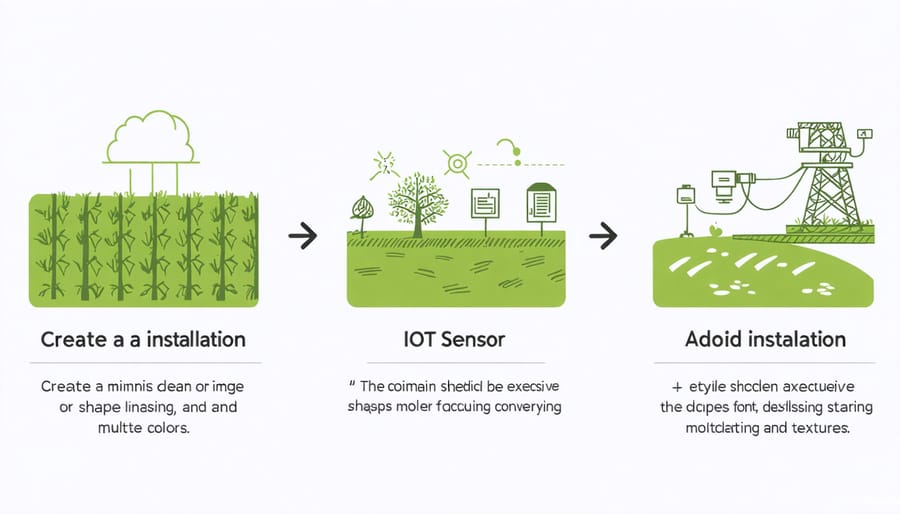
Installation and Maintenance
Setting up IoT farming solutions requires careful planning and regular maintenance to ensure optimal performance. Begin by conducting a thorough site assessment to determine optimal sensor placement and network coverage. Install your base station in a weatherproof location with reliable power access and mount sensors according to manufacturer specifications, typically 1-2 metres above ground level.
For soil moisture sensors, install at multiple depths (15 cm, 30 cm, and 60 cm) to monitor the entire root zone. Weather stations should be positioned away from buildings and trees, ideally in an open area that represents your field conditions.
Maintain your system by performing monthly sensor calibration checks and cleaning sensor surfaces to prevent debris buildup. Replace batteries in wireless sensors every 6-8 months, depending on usage. During winter, protect exposed components with weatherproof covers and remove sensitive equipment if temperatures drop below -30°C.
Schedule quarterly software updates and data backups. Many Alberta farmers find success by partnering with local IoT service providers for annual maintenance contracts, ensuring expert support when needed. Remember to document all maintenance activities and keep a log of system performance for future reference.
IoT water monitoring systems represent a transformative step forward for Canadian agriculture, offering precise control, resource efficiency, and significant cost savings. By implementing these successful water-smart practices, Alberta farmers are already seeing remarkable improvements in crop yields while reducing their environmental impact. The time to embrace this technology is now, as our agricultural community faces increasing pressure to optimize water usage. With accessible solutions available and growing support networks, even small-scale farmers can begin their IoT journey today. By working together and sharing our experiences, we can build a more sustainable and profitable farming future for generations to come. Take the first step toward smarter water management – your farm and our environment will thank you.

